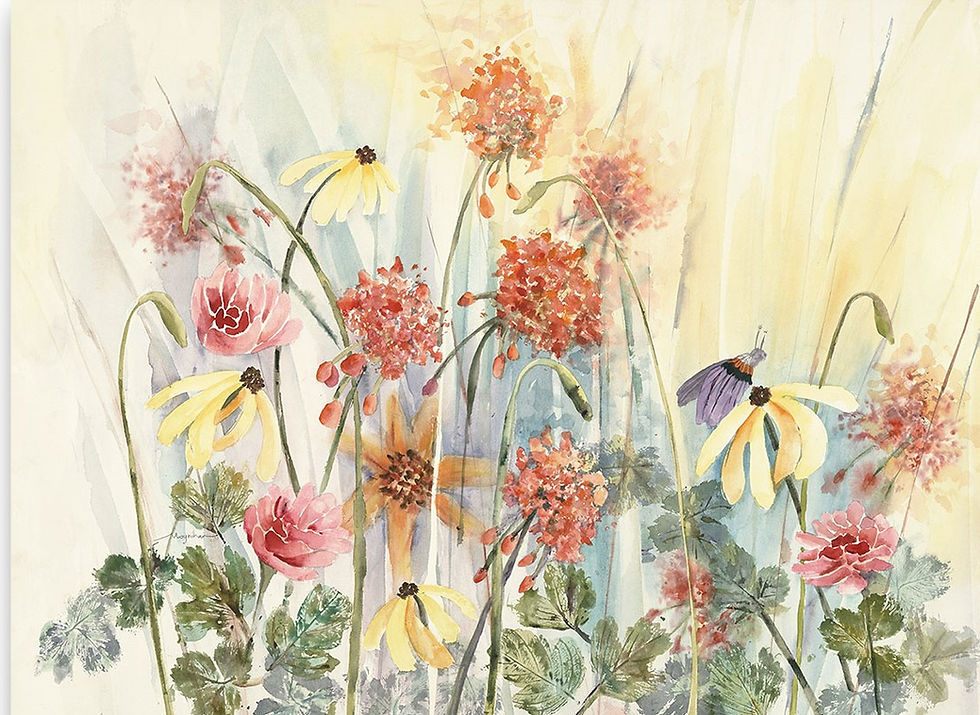You Can Enjoy Viewing Art: With or Without Art Knowledge or Art Education.
- Jul 14, 2019
- 3 min read
Updated: Mar 5, 2022
Respond to art ... that's all you have to do.
Whether you're an art viewing pro or a novice,
here's one key reason you may find yourself admiring a painting a bit longer.
Texture: the feel, appearance, or consistency of a surface or a substance that engages two of your senses.
The more senses you activate, the more engaged you become.
Take something as simple as resisting a cookie.

Picture a buffet table with a plate of store-bought chocolate-chip cookies, sitting idle like they'd been there all morning. If you step aside quickly, you’ll be able to resist.

Then take that same setting, but this time the cookies arrive to the buffet table warm from the oven. The sweet scent of baked brown sugar and melted chocolate hits your nose. Once the cookie plate is set down, you can see the crumbly crisp cookies surrounded by the smooth glossy gooey chocolate. All these added textures engage more senses (sight, touch, and smell) making the cookies ... irresistible!
Texture is a surface quality that stimulates your sense of touch and sight.
Triggering two senses through the sense of touch, adds depth to art, just like activating another sense like in the chocolate chip cookie comparison.
Below, enjoy viewing Van Gogh's technique whether you have art confidence or not.
Vincent Van Gogh, in his famous self portrait of 1889 from the Musée d'Orsay, uses the physical texture of paint not only to fashion his own likeness, but also to reveal his psychological disposition. Notice the planes of his face and texture of his hair are painted in bold cross-hatching strokes which reflects a strong energy. This texture contributes to the psychological intensity of his mood. The movement created in the swirling strokes of his jacket and the turbulent flow of the background are both accentuated by texture.
Van Gogh was a master at employing texture to hold our attention longer on his paintings.
For me, I use a palette knife technique for texture in oil painting. This thick layer of paint engages direction in the composition, and also replicates the cragginess of the birch trees.

But what about watercolor?
What lets your eye linger in this translucent and evasive media?
Once again, I rely on texture.
To capture the intricate details of the leaves, I used a printmaking technique. With my preference for an impressionistic style, I love not having to paint every detail. I let the elements of nature become the beauty of the art. Beside, the textures in the stamens and leaves are better than any brush stroke I can duplicate.
Mixing textures is important for translating how long you will be engaged on a piece of art. Below I use a combination of realistic brush strokes and printing with natural leaves. For me, the increase of texture in the geranium painting adds depth and contrast.
If your curiosity is peaked about this leaf printing-making technique, click this short video.
If you're intrigued by the magic of texture in art, you can click here and quickly scroll this Pinterest page and watch how texture in art captivates you.
Texture makes art sing a song that keeps the melody in our mind’s eye longer!
Enjoy Viewing Art: With or Without Much Knowledge.
If you want to explore more about texture in your home:
P.S.
For those of you with painterly friends, I’ve added a quick step-by step, how-to guide below if you want to share this link:
How to steps for painting realistic leaves:
Gather soap (bar soap, liquid soap, dish soap, any brand seems to work. The soap simply seems to allow the paint to adhere to the leaf a bit better.)
With a brush, coat a thin layer of soap to the underside of the leaf -- the side with the deepest protrusion of veins, stamen and texture.
Apply a thick, rich watercolor wash on top of your soap film.
Using various shades of color will give your finished leaf more depth.
Press the leaf, paint side down in the area of your composition you want the leaf to appear.
Dab the leaf with a paper towel to absorb any excess moisture.
Peel back the leaf.
Let the printed leaf image dry and if you wish fill in the spaces of white with a light wash.








Comments